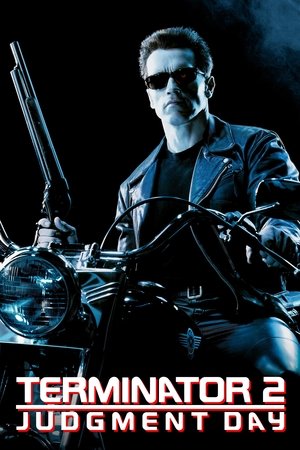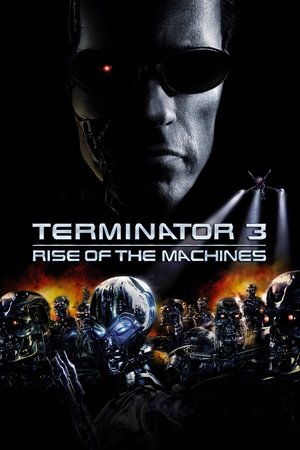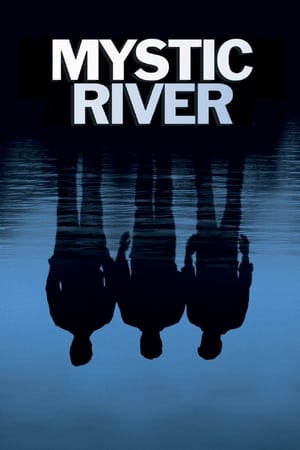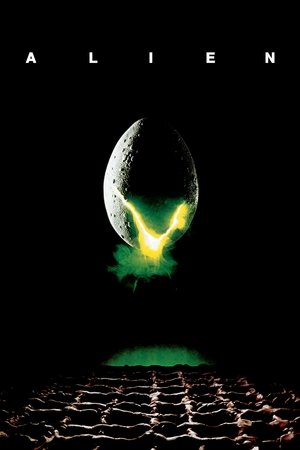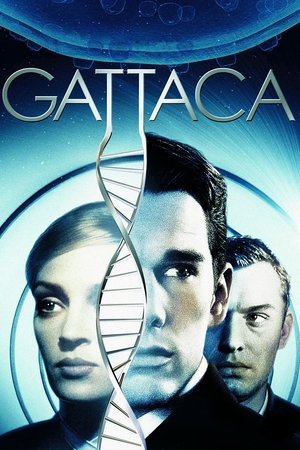Overview
A ship carrying settlers to a new home on Mars after Earth is rendered uninhabitable is knocked off-course, causing the passengers to consider their place in the universe.
Reviews
_**The poem is a masterpiece of esoteric science-fiction literature; and this is an unexpectedly impressive adaptation with a chilling dénouement**_
>_We ride in our sarcophagus in silence,_
>_no longer offering the planet violence_
>_or spreading deathly quiet on our kind._
>_Here we can question freely, true_
>_while the vessel_ Aniara_, gone askew_
>_in bleak tracts of space, leaves vile time behind._
- Harry Martinson; _Aniara: en revy om människan i tid och rum_ [trans. _Aniara: fragments of time and space_] (1956); Canto 25
>_How tremendous outer space is,_
>_h__ow huge its mystery,_
>_how small a part I play._
- Harry Martinson; _Aniara: en revy om människan i tid och rum_; Canto 82
>_In our immense sarcophagus we lay_
>_as on into the empty seas we passed_
>_where cosmic night, forever cleft from day,_
>_around our grave a glass-clear silence cast._
- Harry Martinson; _Aniara: en revy om människan i tid och rum_; Canto 103
>_Our planet is a lonely speck in the great enveloping cosmic dark. In our obscurity, in all this vastness, there is no hint that help will come from elsewhere to save us from ourselves._
- Carl Sagan; _Pale Blue Dot: A Vision of the Human Future in Space_ (1997)
The transitory nature of human existence, especially when set against the infinity of space and time, has served as the inspiration for countless science-fiction narratives in all mediums. Only becoming more relevant as the years go by and we find ourselves in the midst of an increasingly certain man-made extinction event, such narratives usually take one of two overarching forms – they depict our inability to do anything to prevent extinction or they depict our use of technology to avoid extinction (often in the form of going to another planet). An example that falls into both categories is Harry Martinson's epic poem, _Aniara: en revy om människan i tid och rum_ [trans. _Aniara: fragments of time and space_] (1956), which is essentially about the crippling contemplation of meaninglessness that consumes the passengers of a vast spaceship (the eponymous _Aniara_) set adrift in the eternal void of space, with little hope of rescue. An adaptation of the poem, _Aniara_ is the debut feature film from writers/directors Pella Kågerman and Hugo Lilja, and is an exceptionally ambitious film that is also exceptionally well made. With its measured pacing, existential musings, limited cast of characters, open-ended narrative, and stylised visual design, it's about as far from multiplex fare as you can get - _Star Wars_ it most certainly is not. Indeed, it owes more to esoteric films such as Stanley Kubrick's _2001: A Space Odyssey_ (1968), Andrei Tarkovsky's _Solyaris_ (1972), Danny Boyle's _Sunshine_ (2007), and Claire Denis's _High Life_ (2018) than it does to the escapist action-packed science fiction films of mainstream Hollywood. And yes, the characters are a little underdeveloped, with only a couple getting much of an arc, and yes, the science isn't exactly kosher, but irrespective of that, this is a provocative, morally complex, and existentially challenging film that I thoroughly enjoyed, from its low-key opening to its chillingly effective _dénouement_.
Set at an unspecified point in the future, the Earth has reached a point of irreversible decay. However, there is an escape route insofar as humanity has colonised Mars. The _Aniara_ is a massive vessel (4,750 meters long and 891 meters wide) that takes passengers on the three-week trip from a docking station on the moon to the red planet. As the film begins, we meet the unnamed protagonist (Emelie Jonsson). An employee on the _Aniara_, she is in charge of MIMA, hence her "Mimarobe" job title (MR for short). A kind of holodeck-like technology, the semi-sentient MIMA can scan people's thoughts and memories, and allow them to experience whatever is best suited for their psyche (for example, we see MR exploring a vibrant forest). MIMA isn't especially popular amongst the ship's massive contingent of passengers, who are kept busy with the 21 restaurants, and multiple superstores, gyms, bowling alleys, spas, and nightclubs. The _Aniara_ is, in effect, a mobile city. A week into the voyage, however, the ship encounters space debris, and Captain Chefone (Arvin Kananian) alters course to avoid impact. Despite this, a screw pierces the hull, causing a cascade reaction in the ship's reactor, and forcing Chefone to eject the nuclear core. However, the _Aniara_ is now off-course, and without the core, the crew have no way of turning her around or returning to their original heading, leaving them drifting into the darkness of space. Chefone assures the passengers that all they need to get back on course is to slingshot around a planet with a strong enough gravitational pull, but he does warn that it could be up to two years before they find such a planet. MR's astronomer roommate (Anneli Martini), however, scoffs at this notion, saying the chances of finding such a planet are infinitesimal. And so, as months turn into years, with no hope of rescue, the social contract starts to break down, and as people find themselves unable to face reality, MIMA becomes essential for their mental well-being. However, MIMA wasn't designed to be exposed to so many negative emotions for such a prolonged time, and soon she starts to show signs of failing, threatening to plunge the already despairing passengers into total anarchy.
As mentioned, _Aniara_ was written in 1956 by Swedish Nobel laureate Harry Martinson. The title is derived from the Ancient Greek word "ανιαρός" [aniarós], meaning "despairing" or "tedious". It's a long poem, 103 cantos, the first 29 of which had been published in Martinson's 1953 collection _Cikada_, under the title _Sången om Doris och MIMA_ [trans. _The Song of Doris and MIMA_]. The poem, which is more allegorical than the film, its style more rooted in symbolism and metaphor, was written, at least in part, as a reaction to the bombing of Hiroshima and Nagasaki (in the poem, it's not space debris that hits the Aniara, but an asteroid named "Hondo", the historical name for Honshū, Japan's main island, on which Hiroshima is located). Other influences include the still-in-its-infancy Cold War, Walter Baade's doubling of the estimated distance from the Milky Way to Andromeda in 1953, and the brutal Soviet suppression of the 1956 Hungarian revolution.
The film adaptation is divided into nine chapters, which work to mark the passage of time. So, for example, the first three chapters are "Hour 1: Routine Voyage", "Week 3: Without a Map" and "Year 3: The Yurg". The titles of some of the later chapters contain pseudo-spoilers, so I won't mention them here, but although the penultimate chapter is chilling enough in its implications, when the title of the last chapter appeared on screen, I was so sure I'd misread it that I had to ask my friend for confirmation. Turned out I'd read it just fine. In short, this last title contains all the existential dread and mind-bending contemplation of infinity that you could ever want. And it's an absolutely haunting way to end the film.
Which brings us to the themes. Much as is the case with the poem, the film looks at issues such as the possibility that we have already irreparably damaged the planet, the impermanence of human existence, and the sense of meaninglessness that can result when mankind is faced with the eternity of time and space. In relation to this last point, the film spends a good deal of time on the idea that human civilisation is essentially a construct used to shield us from the bleak reality that we are utterly insignificant creatures, and when that construct is removed, we revert to barbarism. Like I said, your typical multiplex stuff.
One of the film's most interesting themes, however, concerns MIMA. Initially introduced as a glorified holodeck with a few lights on a ceiling, we soon learn that MIMA is semi-sentient and can experience emotions. At first, no one really avails of her, but when it starts to look as if the voyage will stretch on for years, she becomes the most important amenity on the _Aniara_, the only thing between some people and complete mental breakdown. The most interesting element of MIMA is how Kågerman and Lilja depict her as half-mind control, half-narcotic. For example, it doesn't take long for people to become dependent on her services, with large queues forming, and people at the back of the line trying to bribe MR into getting them in early. Then, when MR hires another employee, she explains that she'll need to "_teach them to resist the images_", recalling the way people who work in pharmaceutical factories are randomly drug-tested to ensure they're not sampling the product. That's the narcotic element. At the same time, when a passenger proves unable to handle reality and becomes violent, he is forced to experience MIMA against his will and is instantly placated, essentially rendered unconscious. That's the mind-control element.
In the poem, one of the major themes is the importance of art, which is symbolised by MIMA, with Martinson examining what might happen when art is no longer capable of interpreting reality for us – what does a human society without any kind of artistic output look like, how does it work, something represented in the poem by MIMA's malfunction. In depicting such a situation, Martinson emphasises aspects such as hedonism, fertility cults, education, routine, and totalitarianism. Ultimately, however, nothing can replace the vital role that art plays in shaping our understanding of existence, nor its intrinsic importance for the maintenance of the human condition. The film doesn't really reproduce this aspect of the poem (as I said, it's less allegorical), but it does examine how people flock to MIMA more and more as the escapist experience becomes increasingly crucial to life on ship. And as in the poem, MIMA soon proves reluctant to continue processing the never-ending onrush of negative emotions, with the passengers' sense of pointlessness and despair becoming overwhelming, to the point that she tells MR, in a surprisingly moving scene, "_I want peace_". HAL 9000 she is not; he'd have been able to suck it up.
Like in Martinson, the film also deals with topics such as religious cults, riots, and suicide; mankind reduced to its basest elements – violence, sexuality, control. An especially interesting scene occurs when MR pitches her idea for a "beam-screen" to Chefone; essentially, a massive projection which would beam to the outside of the Aniara, visible from its windows, and hence allowing the passengers to experience images of pre-destruction Earth. At this point, MR is working as a teacher, and Chefone refuses her request, telling her to focus on educating the children, in the hopes that one of them might be able to figure out how to turn the ship around. And if that doesn't speak to parents' tendencies to foster their own aspirations onto their children, I don't know what does. It's also typical of how the film handles many of its themes – presenting them in low-key moments wherein issues are raised but not necessarily dwelt upon, meaning the audience must do some of the leg work.
Another theme, of course, and this one not in any way unique to this film, is mankind's destruction of Earth. Whereas once, science fiction narratives focused on nuclear warfare as humanity's probable extinction event, in recent times, global warming and ecological disaster have become far more pervasive. Indeed, Martinson himself was something of a pioneer in this field, positing that we were destroying the planet long before climate change had entered the zeitgeist. In relation to this, the possibility that we may colonise other worlds is now seen not as something to facilitate exploration, but to facilitate survival. Of course, this is rendered all the more terrifying because it's not something only found in the realm of fiction - the planet _is_ dying; the polar ice caps _are_ disappearing, and with them, the future of our species. But when you have a US president who ignores the scientific evidence of his own people, routinely rolls back Obama-era environmental protections, and continually confuses weather and climate, the possibility of our changing course seems rather remote, just like the _Aniara_. And if we can no longer live on Earth, our only hope will be to inhabit somewhere else (presumably so we can destroy there too). This theme is never examined explicitly – we never learn the year in which the film is set, whether or not Earth has already died and is entirely uninhabitable or is simply on the way, nor what exactly it was that finally sent us into the cosmos – but it's touched on obliquely throughout. For example, many characters have facial burns. No explanation is ever given for this, but the implication is that they received their injuries on Earth, which, one imagines, has become unbearably hot. It's another good example of how the film subtly engages with themes without necessarily foregrounding them.
Elsewhere, as time goes by, and the proto-civilisation on the _Aniara_ becomes more and more tenuous, we see a multitude of issues emerging. Chefone, for example, once consumed with fear of mutiny, finds himself revelling in his position of power, essentially establishing a police state in which he isn't above murder. At the same time, religious cults start to spring up, one founded by a woman (Jennie Silfverhjelm) who is first shown as unable to handle the fact that she was going to miss her son's birthday on Mars. Even level-headed characters such as the astronomer or the tough-as-nails navigator, Isagel (Bianca Cruzeiro) start to lose their grip, becoming increasingly unable to stave off the encroaching malaise born from the hopelessness of their situation and the meaninglessness of their existence, with the astronomer voicing one of the most important lines in the film when she tells MR, "_everything we do is peripheral_". Uplifting stuff!
Moving away from thematic concerns, the film's aesthetic is absolutely gorgeous, exceptionally accomplished for a first feature. Made with a relatively small budget, the CGI is basic but highly effective; Kågerman and Lilja don't try anything too complex, anything that would be beyond them given the fiscal restraints, but what CGI that they do employ works exceptionally well. The opening scene, for example, is simple enough – a massive elevator taking passengers from Earth to the _Aniara_, which is moored at the lunar docking station. There's nothing terribly complex or grandiose, but the scenes do exactly what they're supposed to do; tell us that humanity is fleeing the Earth and that technology has become vitally important to our survival as a species. For the _Aniara_ interiors, to save money, rather than building elaborate original sets, much of the film was shot in existing shopping malls and on Scandinavian Ferries, which makes sense, as the _Aniara_ is essentially a giant shopping mall/hotel, not unlike a luxury cruise ship. For the sets that were built from scratch, they are matched seamlessly to the location work, with the sleek minimalist post-modern (one might even say Ikea-like) style of Linnéa Pettersson and Maja-Stina Åsberg's production design working well to suggest rigid functionality – the _Aniara_ wasn't built for extended occupancy, and the no-frills design of the dorm rooms and the MIMA room really drive this home.
In terms of problems, perhaps the most significant is the lack of character arcs (although this is also true of the poem). Aside from MR, Isagel, Chefone, and the Astronomer, there are no characters worth mentioning, and even their arcs are fairly rudimentary. This is felt most in the lack of disparate viewpoints on the _Aniara_; pretty much everything is focalised by MR, so it would have been interesting to meet characters with distinct beliefs, backgrounds, and denominations (although, having said that, the poem has no such characters, and to turn the film into some kind of universal microcosm wherein all Mankind must be represented may very well have betrayed its central themes). Does this leave the viewer with no characters with whom to empathise? Yes, to a certain extent it does, but this is by design rather than a flaw in the filmmaking; the film isn't asking us to fall in love with a cast of well-rounded characters, it's asking us to engage with it at an esoteric level, and the people depicted therein facilitate such engagement. Along the same lines, I've seen some reviewers say the film is lifeless, that it's too cold and detached. I'd agree that it's detached, but again, this is by design. However, I certainly didn't find it lifeless, quite the contrary in fact, with life on ship depicted vibrantly. It certainly asks a lot of the audience, much more than most science fiction, but to equate a lack of vitality on the ship with a lifelessness in the filmmaking is to parse the film on the most superficial of terms. Rather, the tone is precisely what it needs to be to carry its themes.
I will concede, however, that the science has some issues. Why, for example, would a ship the size of the _Aniara_ be used as a short-distance transport vessel? It's mentioned several times that the ship wasn't built for long-term habitation, but one wonders why. Why are there so many amenities, why is the power that maintains life-support self-regulating, why are the algae farms designed to produce food indefinitely if the ship's only intended use was to make the six-week round trip between the moon and Mars? And the practical nature of the sheer size of the Aniara throws up its own problems. The filmmakers get around the issue of the immense escape velocity that would be required for a vessel this large to leave Earth's gravitational pull by having the docking station on the moon - to enter orbit from the surface of the Earth, escape velocity must reach 7 miles per second (just over 25,000 miles per hour). However, a ship the size of the Aniara would never be capable of reaching such speeds from a stationary position on the planet's surface. So that's fair enough, with the implication being that the ship was built on-site at the lunar docking station. What is a problem, however, is that Mars is (on average) 140 million miles from Earth, so for the Aniara to complete the journey in three weeks, it would need to be travelling at an average velocity of 277,777 miles per hour (to put this into perspective, the speed of sound is only 767.3 miles per hour). If we assume that the ship is travelling at such a speed (and we must, given the distance and time constraints), the power needed to slow the vessel down upon reaching Mars space is virtually unfathomable. Newton's second law of motion states that "_for a constant mass, force equals mass times acceleration_"; in short, the greater the mass and the greater the speed, the more force it takes to slow down. So using a ship the size of the _Aniara_ in the way in which the film does is not only impractical, it's virtually impossible, irrespective of advances in technology.
Nevertheless, for me, the surrounding film is so accomplished, I can easily forgive the scientific inconsistencies (and if you've ever sat through a _Star Wars_ film, so can you). Even something as exhaustively researched as Christoper Nolan's _Interstellar_ (2014) is riddled with scientific implausibilities and plot holes, but that doesn't mean it's not a great film. The same goes for _Aniara_ (and if you're thinking it's sacrilegious to compare _Aniara_ to _Interstellar_, I'll do you one better; I enjoyed _Aniara_ more, especially in the days after I saw it, as it continued to linger in my consciousness in a way _Interstellar_ did not). As aesthetically impressive as it is morally complex, as esoterically fascinating as it is unrelentingly despairing, this is a hugely impressive debut film. Equal parts haunting and provocative, the picture it paints of a humanity pushed to extremes and faced with its own extinction isn't a pretty one, but it is an urgent and a relevant one, as we hurtle towards an extinction brought about by our own actions, rapidly approaching the point where, like the _Aniara_, we will no longer have the capacity to turn around. And when we reach that point, the only things in our collective future will be the all-encompassing frigidity, indifferent darkness, and deafening silence of the infinite.

 106 min
106 min
 6.093
6.093
 2019
2019
 Denmark
Denmark
 Stephen Campbell wrote:
Stephen Campbell wrote:



